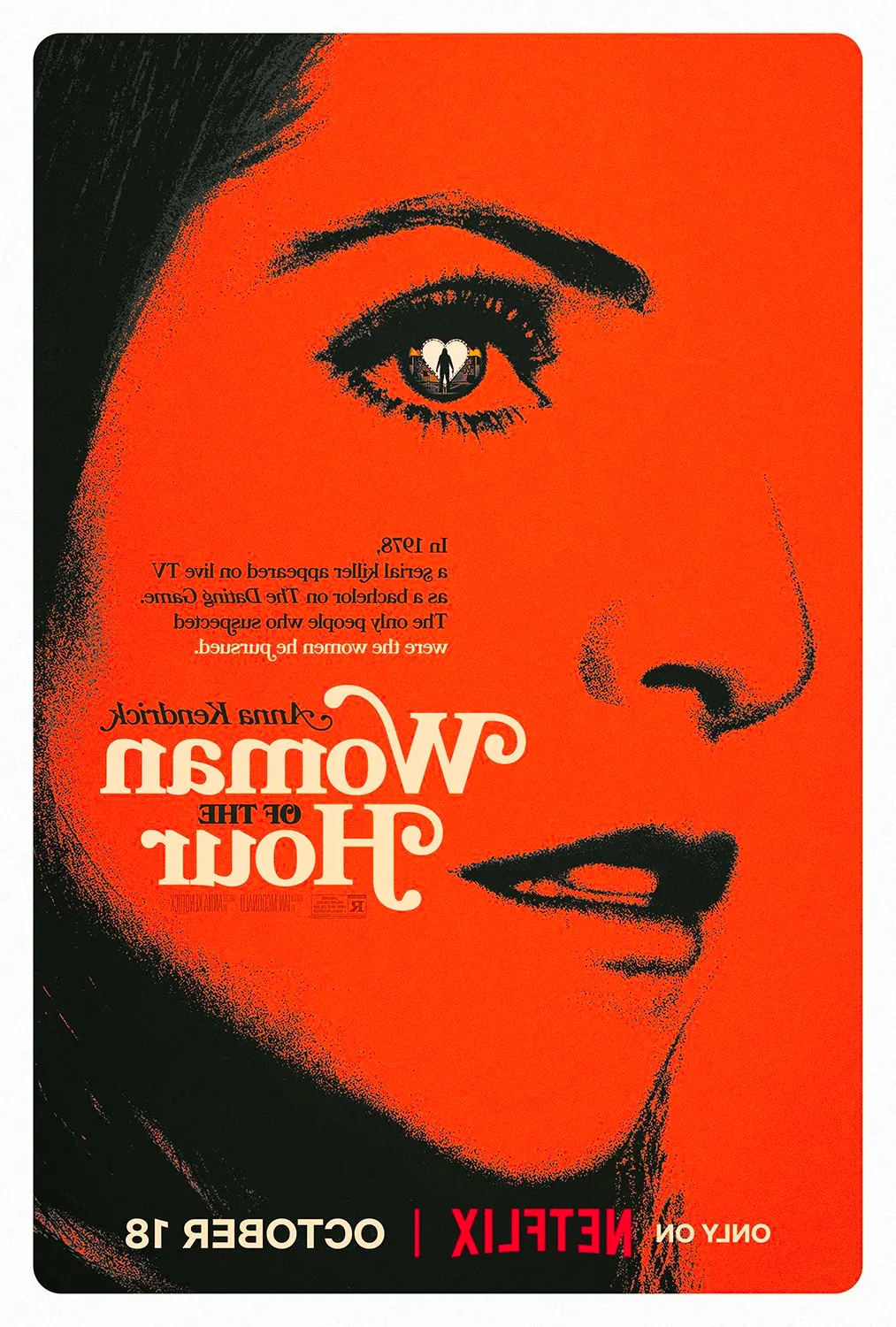Movies News Talk
Woman of the Hour: Anna Kendrick's True Crime Thriller - Rodney Alcala's Story
Woman of the Hour: Unraveling the Chilling Story of Rodney Alcala and the Systemic Failures That Allowed Him to Thrive
Woman of the Hour: A Deep Dive into Rodney Alcala's Crimes and Their Impact
Woman of the Hour isn't your typical true-crime docudrama. Directed by and starring the amazing Anna Kendrick, this film cleverly reimagines the story of Rodney Alcala, that notorious serial killer; and unlike many true-crime tales, this story shifts focus towards those victims and uses these perspectives to deliver its story! It’s about the women he targeted—specifically focusing on Cheryl Bradshaw’s experience on The Dating Game and reimagines how this would affect people around her!
Woman of the Hour expertly uses this narrative approach to really highlight the systemic issues allowing Alcala’s crimes to happen for so long. Although the movie takes some liberties – creating fictional characters (like Laura); changing real names – it focuses on its important subtext: demonstrating those deep societal flaws, those prejudices and assumptions that completely enable criminals like Alcala! Even the film's somewhat abrupt ending— covering just a part of Alcala's extensive crime spree—leaves that unsettling feeling behind, ensuring you'll think about it after those credits start rolling! And trust me when I say, those events were absolutely shocking; leaving several key details that this very article will discuss in greater depth.
What Happened After Alcala’s 1979 Arrest? A Lifetime of Horror

That February 14th, 1979 arrest? That wasn’t the end. As revealed in Woman of the Hour's epilogue, his crimes continued after that initial arrest which might just surprise and absolutely horrify viewers! He was released on bail after Monique Hoyt’s report, yet after a short time this horrible criminal managed to commit more atrocities—resulting in multiple victims, namely Jill Marie Parenteau and then twelve-year-old Robin Christine Samsoe who both perished by his very hand.
Even after these additional acts of immense cruelty that led to multiple murders that he committed, those law enforcement systems involved had considerable difficulties in tracking and catching this individual which further emphasizes those deep systemic issues, those flaws that existed and made this heinous and unspeakable cruelty, possible. He remained in the criminal justice system, yet his very complicated and convoluted court proceedings resulted in a string of acquittals; further delayed convictions and other difficulties involved—which only finally reached his conviction in five counts of first-degree murder in 2010. That same year and several other events thereafter, this led to him receiving three death sentences and other subsequent court cases. Sadly, Alcala died in prison, aged 77, in 2021; dying of natural causes in California. This whole series of events highlights that this specific villain remains highly noteworthy, especially because of those failures and inadequacies which greatly contributed toward his long history of committing atrocious crimes, even across multiple time periods.
Amy’s Escape: A Powerful Narrative of Resilience

That section in the ending involves Amy; demonstrating the power inherent within that very scene, using psychological strategy to defeat Alcala! It shows how clever strategy might save those who are caught and overcome various forms of aggression or assault. This pivotal storyline is key to understanding this specific narrative element! After his violent attack on Amy (which highlights the sheer cruelty that Alcala used with victims), Amy cleverly uses emotional control against the attacker; using her appearance as the ultimate key and strategy involved here, carefully feigning agreement to not trigger his explosive impulses. Instead, Amy plots her escape. This creates intense, high-stakes drama with unexpected outcomes and showcases her strength!
Cheryl’s Decision: Recognizing Danger

The entire storyline involved here centers on Cheryl Bradshaw’s (reimagined as Sheryl) appearance on The Dating Game, a key component for those deeply unsettling details! She is presented in the beginning and during that crucial scene involved with the re-imagined Cheryl; where this fictional character rejects Alcala; showing the beginning of her survival from those early attempts involved. This specific moment clearly showed why those who recognized danger often do better than others. Alcala’s sudden and noticeable shift when confronted demonstrates his very fragile nature. His behavior's transformation really made Sheryl realize Alcala’s true nature.
Alcala's Path to The Dating Game: The Dangers of Untracked Criminal Histories

How exactly did Alcala appear on The Dating Game? Woman of the Hour highlights this important aspect; even though Alcala had criminal charges, they weren’t noticed because the lack of accessible technology for those pre-internet background checks failed to catch them. This makes for a stark illustration highlighting that these kinds of background checks—which have become so integral into everyday life – failed to exist, despite showing extremely significant, life-altering dangers!
Laura's Untold Story: Systemic Dismissal of Violence Against Women

The film is crucial, not simply because it examines Alcala’s crimes, but shows the important details involved with emphasizing what happens when certain complaints fall unheard! This aspect uses Laura (a fictional character) to highlight this important aspect, reinforcing why these themes around these incidents remain vitally important for modern audiences!
Her narrative completely showcases those terrible systems – how easily such concerns are minimized! It really is essential to show that even if such events happen and dangers are seen and highlighted–the inherent systems involved within that social landscape and those prejudices against those who have experienced assaults may also have resulted in the additional victims who never came to get the necessary support.
Cheryl Bradshaw's Life After The Dating Game: A Life Lived Quietly

Cheryl Bradshaw (unlike Sheryl in the movie), never saw Alcala again! She wisely got away, warning show staff, a crucial moment and contrast! After this, nothing much has happened since then.
Conclusion: A Powerful Narrative That Remains

Woman of the Hour takes this known storyline. This is no ordinary true-crime story. It focuses on victim perspectives, showcasing Alcala’s cruelty but more importantly–the systemic issues enabling his atrocities! Even the changes it made increase emotional resonance and emphasis its serious, thought-provoking themes! The lasting impression demonstrates its creative success – despite using fictional elements; emphasizing both emotional and dramatic effect. This clever creative narrative really worked perfectly for its purpose!
And this makes it a critical work; reminding us to always support and believe those who experience violence! And it should serve to make these deeply important issues widely known— this will hopefully minimize those opportunities that can allow for heinous and awful criminals, the kind of horrific monsters that Alcala was, to continue committing such unspeakable cruelty.
- Dragon Ball Daima: HUGE Spoiler Hidden in Episode 1 - Final Villain Revealed!
- Winds of Winter: Fixing Game of Thrones' Bells Disaster
Related Articles
- Dragon Ball Daima: HUGE Spoiler Hidden in Episode 1 - Final Villain Revealed!
- Stu Macher's Return? Matthew Lillard's Scream Cameos Explained!
- The Simpsons Finale: Showrunner's Genius Plan for a 'Regular Episode' Ending
- Fly Me to the Moon Movie: Cole Davis vs. Gene Kranz - Fact and Fiction
- Greta Gerwig's Narnia on Netflix: Why a Theatrical Release is Crucial
- American Sports Story: Aaron Hernandez's 'God Forgives' Tattoo - Hulu Series
- Dragon Ball Daima: New Characters, Returning Favorites & Epic Plot!
- Georgie & Mandy's First Marriage: Tango's Hidden Meaning Explained
- The Platform 2 Explained: Goreng, Perempuan, and the Mid-Credits Mystery
- Silent Hill 2 Remake: Maria's Outfit Controversy - A Deep Dive
- Florida Abortion Vote: DeSantis's Aggressive Fight Against Amendment 4 + Key Senate Race!
- Jack Ryan MOVIE Confirmed! John Krasinski Returning in HUGE Amazon MGM Film Adaptation!
- Deadpool & Wolverine on Disney+ NOW! Release Date, Box Office Domination & HUGE MCU Implications!
- Deadpool & Wolverine on Disney+ - Release Date Announced! Box Office RECORD-BREAKER Streaming Now!
- ADORABLE NICU Halloween Costumes! Chicago Hospital Contest Winners Will Melt Your Heart!
- Saoirse Ronan's VIRAL Speech on Women's Safety! Powerful 'Graham Norton' Moment Sparks HUGE Debate!
- Megan Thee Stallion ADMITS Lying About Tory Lanez! New Documentary Reveals SHOCKING Truth - Will Tory's Sentence Change?
- Celebs Go Political! Madonna, Cardi B, Jake Paul & MORE Endorsements in 2024 Election!
- Megan Thee Stallion's SHOCKING Confession: New Documentary Reveals Tory Lanez Lie! Watch the Trailer NOW!
- Reese Witherspoon's STUNNING Awards Night Looks + Political Endorsement! See Her GORGEOUS Outfits!